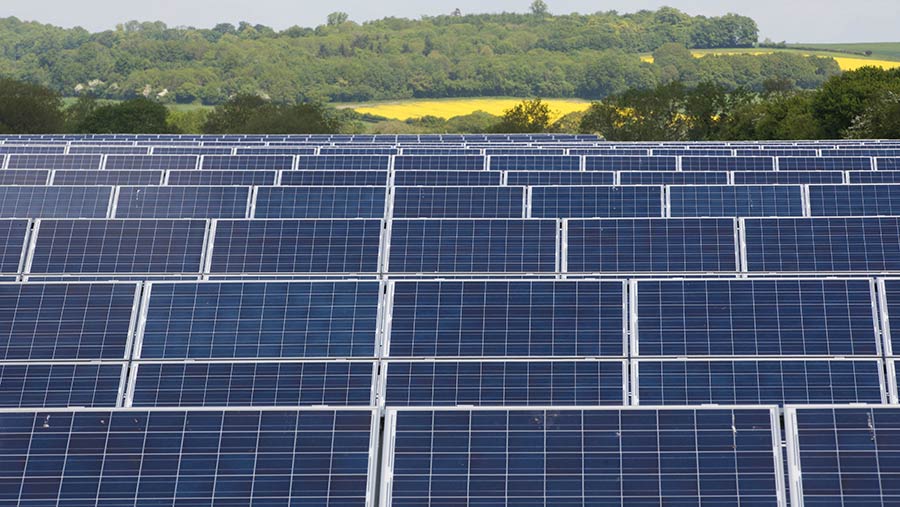Business Clinic: Is solar promotion agreement a good idea?
 © Tim Scrivener
© Tim Scrivener Whether it’s a legal, tax, insurance, management or land issue, Farmers Weekly’s experts can help.
Miles Thomas of Carter Jonas Rural sets out how an alternative approach to a solar lease project might suit a landowner better than the conventional route.
See also: Business clinic – worried about horse trek across our livestock fields
Q: I’ve heard that energy development can now be managed through promotion agreements, in the same way that residential development often is – is this true?
If so, how does it work and is it a better deal for the landowner?
A: Broadly, yes, promotion agreements are being used for energy developments.
Before explaining how it works, it’s worth saying that many landowners seem to think that the opportunity to get involved in large-scale solar has passed, but this is not the case.
It’s still very much a viable diversification option and competition is fierce, which is great for landowners.
For this new type of agreement, the basic criteria still apply: land should ideally be grade 3 or below, free of environmental designations, close to a substation or with overhead power cables, and an area of 80-plus acres.
Battery storage can also work with this new type of agreement, and the land area required for batteries can start at as little as two acres.
Traditionally, energy developments have worked on an option to lease basis.
This means that the developer secures a grid connection and planning permission and then often sells the scheme to an operator or refinances it, taking a ‘developer premium’ from the process.
The landowner in this case would take an improved rent for their land of about £1,000/acre.
Share in developer’s premium
This alternative option, however, includes a promotion agreement where the landowner and promoter share the developer’s premium (the uplift in value following the planning permission and grid connection).
Under the promotion agreement, the promoter invests the whole capital risk involved in planning, permitting and the technical elements of the project, and the uplift in value is split between the promoter and the landowner, according to pre-agreed proportions.
Across 200 acres, under the traditional option to lease arrangement, the landowner could expect in the region of £200,000 a year.
Under a promotion agreement structure, once planning permission and a grid connection agreement have been secured, the promoter and landowner sell the project and split the total value uplift.
What this means is that the landowner keeps the land, still receives the £1,000/acre a year in rent but also gets a share of the developer premium.
For a 200-acre scheme, this share could equate to between £500,000 and £1m – so, to answer the final part of your question, it’s likely to end up being a better deal for the landowner.
If you’re considering energy development and you’ve had a developer contact you, then there is a good chance your land has potential and may be of interest to a promoter, too.
Do you have a question for the panel?
Outline your legal, tax, finance, insurance or farm management question in no more than 350 words and Farmers Weekly will put it to a member of the panel. Please give as much information as possible.
Email your question to FW-Businessclinic@markallengroup.com using the subject line “Business Clinic”.
